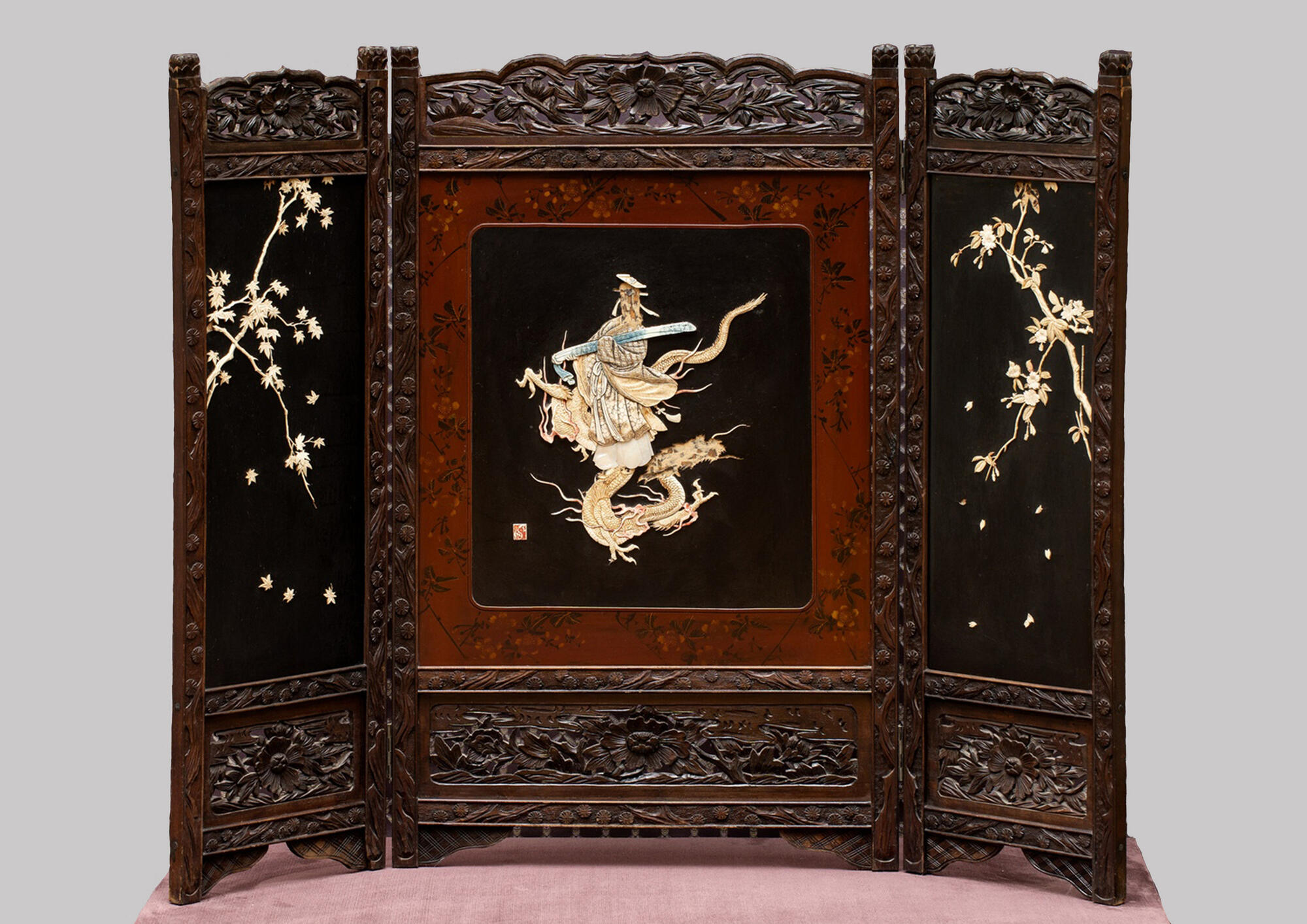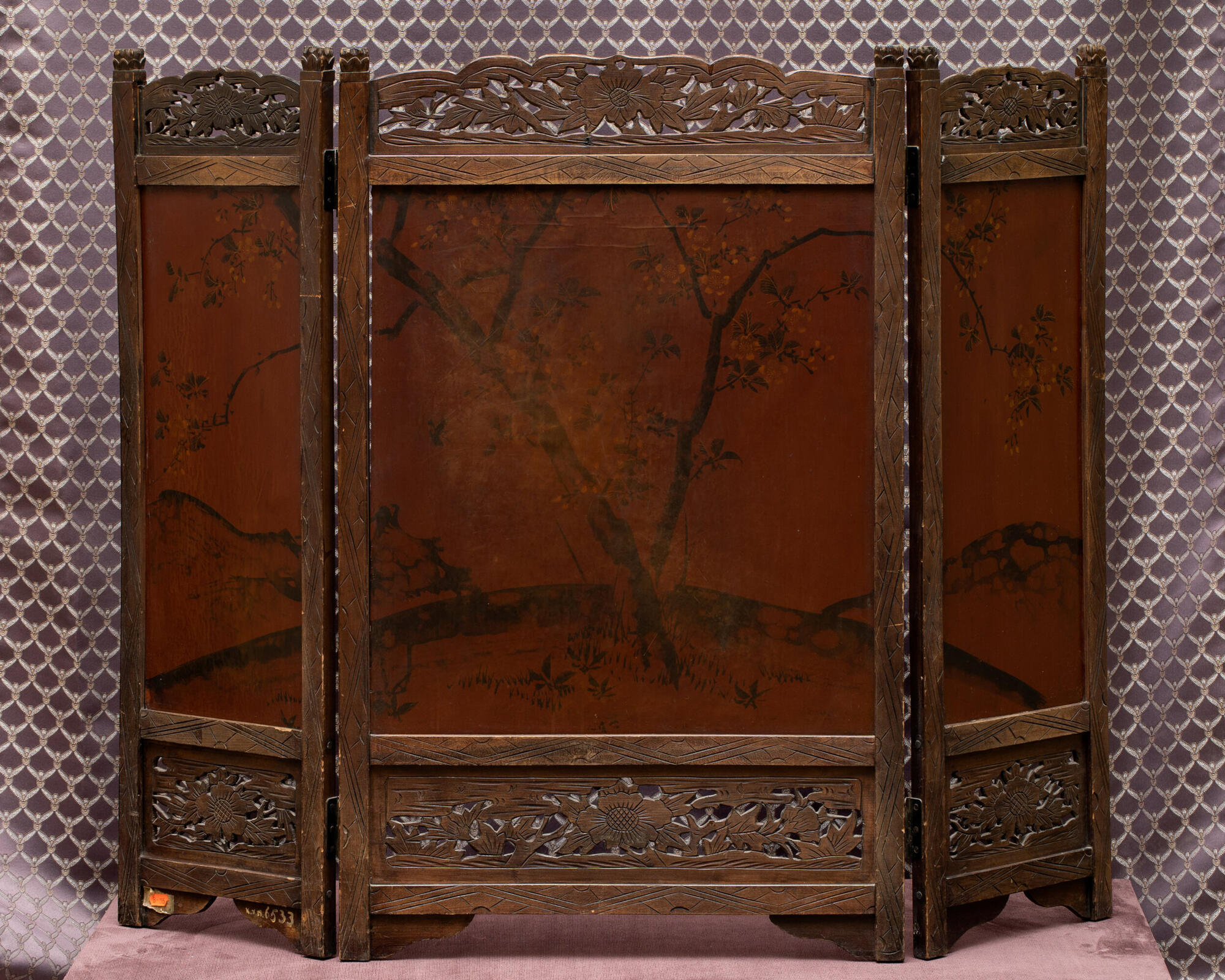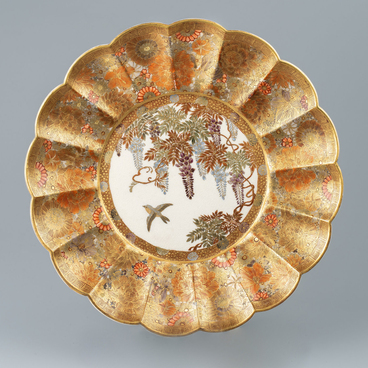The Samara Regional Art Museum presents a three-paneled folding screen — a bright example of Japanese decorative and applied art. An exquisite and streamlined screen was created in various techniques: wood carving, lacquerwork and ivory and mother-of-pearl inlay.
All the images are painted with restraint and accuracy, which is typical of Japanese art. One can see a cherry blossom branch on the front side of one of the side panels; there is a maple branch on the other side, and a deity on a dragon in the center. The central image was damaged; however, judging by a number of signs, for example, the costume of the god, it can be assumed that this is Ryujin. The god Ryujin is a dragon, a deity of the water element and supreme power. A landscape with cherry blossoms in the center and mountains in the background is depicted on the reverse side of the screen.
Screens, like many Japanese household items and art forms, are rooted in Chinese culture. The most ancient Chinese screens, dated to as early as the 2nd century BC, were made of glass and mica and decorated with jasper and metal. Leather, paper, mother-of-pearl and fabrics were also used to make screens; for some screens, only wood was used. It was customary to depict landscapes, scenes from everyday life, as well as to write aphorisms and “golden thoughts” of the sages on the panels. Some Chinese screens were made up of 40 or more panels and represented magnificent panoramas.
Screens were brought to Japan in the 8th century from China and, due to the peculiarities of Japanese culture, for a long time remained one of the main interior décor items.
In the Land of the Rising Sun, the material world, as part the daily routine even of those with a high social status, has always been relatively small. The appearance and disappearance of homeware items in a Japanese house (always removed into special cabinets as needed) was a material expression of the idea of temporality and impermanence of being. And the screen organically fit into this way of life, becoming for the Japanese even to some extent an image of the world order, its permanence and movement. Japanese screens can be attributed to both decorative items and furniture: they answer the task of zoning the area or hiding untidy parts of the house. Due to the skillful depiction of landscapes, the screens not only served as decorations, but also visually made the room bigger.
All the images are painted with restraint and accuracy, which is typical of Japanese art. One can see a cherry blossom branch on the front side of one of the side panels; there is a maple branch on the other side, and a deity on a dragon in the center. The central image was damaged; however, judging by a number of signs, for example, the costume of the god, it can be assumed that this is Ryujin. The god Ryujin is a dragon, a deity of the water element and supreme power. A landscape with cherry blossoms in the center and mountains in the background is depicted on the reverse side of the screen.
Screens, like many Japanese household items and art forms, are rooted in Chinese culture. The most ancient Chinese screens, dated to as early as the 2nd century BC, were made of glass and mica and decorated with jasper and metal. Leather, paper, mother-of-pearl and fabrics were also used to make screens; for some screens, only wood was used. It was customary to depict landscapes, scenes from everyday life, as well as to write aphorisms and “golden thoughts” of the sages on the panels. Some Chinese screens were made up of 40 or more panels and represented magnificent panoramas.
Screens were brought to Japan in the 8th century from China and, due to the peculiarities of Japanese culture, for a long time remained one of the main interior décor items.
In the Land of the Rising Sun, the material world, as part the daily routine even of those with a high social status, has always been relatively small. The appearance and disappearance of homeware items in a Japanese house (always removed into special cabinets as needed) was a material expression of the idea of temporality and impermanence of being. And the screen organically fit into this way of life, becoming for the Japanese even to some extent an image of the world order, its permanence and movement. Japanese screens can be attributed to both decorative items and furniture: they answer the task of zoning the area or hiding untidy parts of the house. Due to the skillful depiction of landscapes, the screens not only served as decorations, but also visually made the room bigger.




